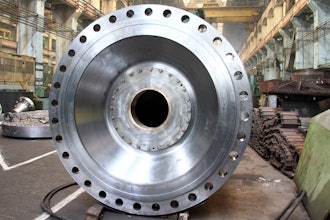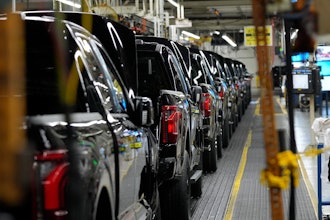
While the manufacturing industry has always been susceptible to disruptions, the COVID-19 crisis, post-pandemic economic effects, the ongoing conflict in Ukraine, and, more recently, the Israel and Gaza war have further exposed the vulnerabilities of today’s global supply chain. Businesses face a myriad of industry variables and challenges – from sourcing issues and delivery delays to fluctuating materials costs and heightened uncertainty – making it difficult to consistently estimate, plan, source, and complete projects on time.
Although the industry is expected to face nominal economic growth due to heightened uncertainty and labor shortages, forward-looking manufacturing operations teams have a unique opportunity to future-proof processes by acknowledging priority trends across the industry, factoring in variables impacting change, and addressing long-term challenges with today’s should-cost analysis and risk management techniques.
2024 Manufacturing Trends and Challenges
As organizations across the supply chain steer manufacturing processes through the current waters, emerging trends provide helpful insight for change. These trends include a fluctuating supply chain, the increased adoption of Industry 4.0 technology, and amplified demand for environmental responsibility.
1. Fluctuating Supply Chain: A significant focus for manufacturers since the beginning of the pandemic and amidst recent global events has been navigating evolving supply chains. A recent Deloitte outlook found that while the average manufacturing cycle time has notably improved since 2022, it has not fully returned to pre-pandemic levels. Ongoing shortages in metals and mining, chemicals, automotive, semiconductors, and technology that have carried on for 30+ months continue to cause production and delivery complications for various manufacturing subregions. Today’s supply chains are a complex ecosystem of suppliers, manufacturers, distributors, and retailers spanning geographies. Despite the apparent transportation and supplier-related issues and costs, manufacturers need to have more visibility into all supply chain costs now than ever. Through practical cost estimation, businesses can gain insight into various scenarios to determine needs for longer-term investment decisions, such as adding warehouses, purchasing new equipment, sourcing new sustainable suppliers, and fast-tracking new technology integration.
2. Increased Emphasis on Environmentally Sustainable Practices: The Environmental Protection Agency’s (EPA) recent report, “Sustainable Engineering: The Future of Cost-Effective Environmental Solutions,” underscores the importance of sustainable engineering practices and how they can help minimize environmental impact and lead to substantial cost savings in the long run. This is particularly relevant in manufacturing, where material choices and process efficiencies significantly influence environmental and financial outcomes. Recent data from the National Association of Manufacturers (NAM) highlights that nearly 70% of U.S. manufacturing executives are pursuing sustainable practices, underlining the demand for effective cost estimating that helps organizations manage costs to minimize environmental impact while ensuring long-term profitability.
3. Industry 4.0: Smart Factories, Generative AI, and Digital Twins Modernize Manufacturing: Industry 4.0 and advanced digital technologies are quickly becoming the norm for manufacturing worldwide, with automotive, electronics and technology, oil and gas, and fast-moving electronics leading the charge. Deloitte noted that 86% of surveyed executives believe smart factory solutions will be primary competitors over the next few years and that Generative AI will profoundly impact product design, predictive maintenance, and supply chain management. There has also been an increased adoption of digital twins, the virtual representation of physical objects, processes, or systems, helping businesses replicate real situations and outcomes to make better long-term decisions. With the ability to test the impact of changes in a virtual environment and provide a clear view into potential cost ramifications under different conditions, digital twins are a game-changer regarding predictive capabilities. Reducing risk and costs associated with manual trials and providing real-time data, digital twins will play a substantial role in managing and optimizing manufacturing cost estimation and planning.
Manufacturing Opportunities with Advanced Should-Costing and Risk Management
The pandemic and recent global conflicts highlighted the need for manufacturers and other industries to respond and adapt to unexpected scenarios. While it’s impossible to predict global disruptions, manufacturers can leverage the latest should-cost and risk analysis techniques to help pivot and adjust to unforeseen changes, setting them up for long-lasting success.
Practical should-cost analysis can streamline every manufacturing stage, from concept to completion. In addition, leveraging accurate cost predictions and insights helps businesses navigate supply chain variables, disruptions, and changes in technology in more sustainable ways.
- Predictive Analytics: Anticipating future costs and streamlining production efforts help businesses stay ahead of the curve. By leveraging real-time data and advanced algorithms, manufacturers can predict future costs, anticipate equipment failures, and streamline production processes with unparalleled precision. For example, consider a manufacturing facility specializing in precision parts. Predictive analytics can forecast when an essential piece of equipment is likely to fail. Sensors installed on the equipment monitor various performance indicators in real-time—such as vibration levels, temperature, and operational speed. The data collected can then be analyzed to predict equipment failure, allowing the facility to perform maintenance proactively, optimize equipment uptime, and reduce costs associated with unexpected breakdowns.
- Process Evaluation: Evaluating various manufacturing process options helps businesses make better-informed decisions, ensuring optimal resource utilization and cost savings. For instance, an electronics manufacturer looking to optimize their circuit board assembly process should comprehensively evaluate their production line. This hypothetical manufacturer can identify bottlenecks that are slowing down production and increasing costs by analyzing data on material flow, machine setup times, and labor efficiency. The resulting data can be leveraged to reorganize the assembly line layout and create and optimize targeted training for staff on lean manufacturing principles.
- Material and Product Modeling: Modeling multiple materials and production processes helps determine the most cost-effective approach. For example, a furniture manufacturing company embarks on a project to create a new line of eco-friendly chairs. The company can use advanced material modeling software to simulate the performance, durability, and cost of different sustainable materials, such as recycled plastics, bamboo, and reclaimed wood. Through this analytical approach, the manufacturer can assess the impact of each material on the product's lifecycle, including manufacturing costs, environmental footprint, and end-user pricing.
- Labor and Resource Forecasting: Optimizing team planning by predicting labor hours and ticket volumes ensures that resources are utilized efficiently. Consider a scenario where a logistics company faces the challenge of fluctuating demand throughout the year, impacting its workforce management and operational costs. The company implements a sophisticated forecasting model that leverages historical data on shipment volumes, seasonality, and current market trends to address this. By analyzing this data, the model accurately predicts future labor requirements and ticket volumes. This enables the company to adjust staffing levels proactively by scaling up the workforce during peak seasons or implementing training programs during slower periods to enhance skills and efficiency. This strategic forecasting results in a more balanced workload distribution, reducing overtime costs and employee burnout. Furthermore, it ensures that the company can meet its service level agreements (SLAs) with customers without overcommitting resources, ultimately improving operational efficiency and customer satisfaction.
- Risk Analysis Tools: Proactively Mitigating Manufacturing Challenges: Risk analysis tools play a crucial role in manufacturing by proactively identifying potential issues, thereby transforming risks into avenues for project enhancement. Consider a scenario where a manufacturing firm specializing in automotive parts utilizes risk analysis software to foresee and mitigate risks associated with supply chain disruptions, machine failures, or fluctuations in demand. The firm can predict potential bottlenecks or shortages by integrating real-time data from their production line and supply chain metrics into the risk analysis tool. This foresight allows the company to adjust procurement strategies, schedule maintenance to prevent machine downtime, and shift production schedules in response to predicted demand changes, which helps avoid potential delays and cost overruns.
As businesses launch into 2024, manufacturing operations and management teams need effective methods for cost estimation and risk analysis to model a proactive response to today’s market challenges. While reducing costs, improving production and supply efficiencies, and enhancing revenue margins are ongoing goals, implementing planning, estimating strategies, and predictive-demand tools help organizations make smarter long-term planning decisions surrounding technology investments, sourcing, labor needs, and changes, as well as the impact of potential delays and closures. Simultaneously, in this period of heightened social responsibility, scarce resources, and increased regulations, data-driven planning and risk analysis help manufacturing teams balance sustainability with profits.
About the Author
Dan Galorath is the founder and CEO of Galorath Incorporated and brings over four decades of engineering, software, estimating, and analysis experience and consulting services to industry and government sectors. Dan is the founder and CEO of Galorath, the premier provider of cost, scheduling, and should-cost estimation solutions and consulting services. Focused on turning software from an art into an engineering discipline to total acquisition, he is an accomplished author, writing widely on estimation, planning, measurement, control, and risk analysis, including the book "Software Sizing, Estimation, and Risk Management: When Performance Is Measured Performance Improves" (Auerbach Publications 2006). Dan has received lifetime achievement awards from SCEA and ISPA.























